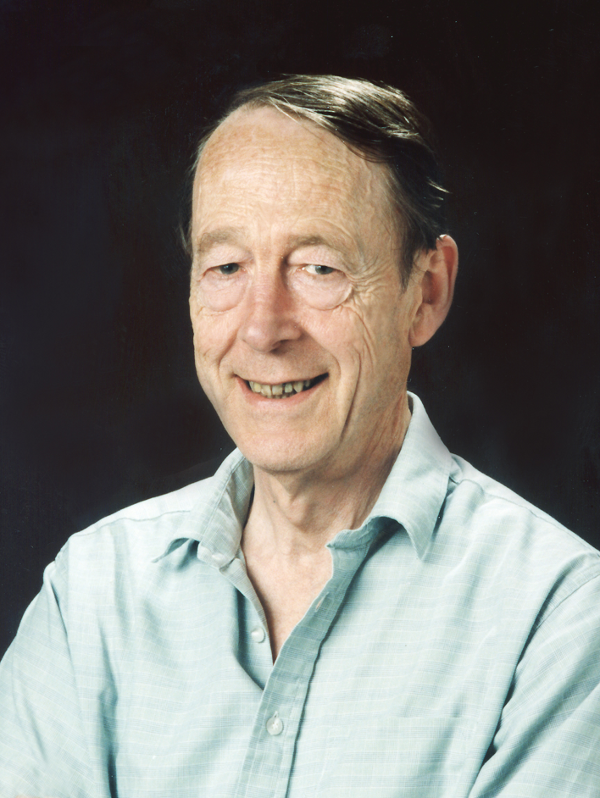Symmetry and Fundamental PhysicsTom Kibble at 80
Imperial College London, March 13th 2013
About the meeting
This one day symposium and evening public lecture will celebrate Professor Tom Kibble's 80th birthday. Over his career Tom has made enormous contributions to fundamental physical theory. His understanding of the mechanism of mass generation via symmetry breaking in Yang-Mills theories in his key papers of 1964 and 1967 provided the foundations for the Standard Model and the prediction of the Higgs boson. Tom has also made very significant contributions to the study of the dynamics of symmetry breaking near phase transitions with diverse applications including to structure formation in the universe and to vortices in Helium-3.Please go to this page for information on registering.
Sponsors

|

|

|
Biography of Tom Kibble
Thomas Walter Bannerman (Tom) Kibble's career at Imperial College London began 53 years ago. Born in 1932 in Madras, India, then attending school in Madras and Edinburgh and graduating from the University of Edinburgh (MA 1955, BSc 1956, PhD 1958), he joined the Theoretical Physics Group at Imperial as a NATO Fellow in 1959. This group was set up by the late Professor Abdus Salam in 1956, initially in the Mathematics Department, moving to Physics in 1960.In 1964, Kibble wrote a paper entitled "Global conservation laws and massless particles" in collaboration with two American scientists – National Science Foundation postdoctoral fellow Gerald Guralnik, and Richard Hagen from the University of Rochester, New York. This was one of three papers that appeared in the summer and autumn of that year in the leading journal Physical Review Letters, describing a mechanism for giving mass to elementary particles within the context of “gauge theories”. In June 2008, these papers were selected by the journal as among the most significant published there in the last 50 years. In 2009, the six authors of these papers were jointly awarded the prestigious J.J. Sakurai Prize by the American Physical Society for this achievement. One feature of this mechanism is the existence of a mass-giving particle now known as the “Higgs boson”, which has almost certainly been discovered recently at CERN.
Kibble went on to publish a second influential paper in 1967, in Physical Review, entitled "Symmetry breaking in non-Abelian gauge theories". Together with the earlier papers, this was instrumental in leading to the development of a unified theory of weak and electromagnetic interactions, the “electroweak” theory, for which Salam shared the 1979 Nobel Prize for Physics with Sheldon Glashow and Steven Weinberg. This theory suggests that there is an underlying symmetry between these interactions that is hidden except at very high energy by the phenomenon of spontaneous symmetry breaking. It is now part of the very successful “standard model” of particle physics.
Kibble has made many other contributions, often related to spontaneous symmetry breaking, including the idea of cosmic strings – hypothetical one-dimensional defects that may have been created in the very early history of the universe. No observational evidence for them has yet been found, but the same mechanism has found application in condensed matter physics.
Dr Kibble became Professor of Theoretical Physics at Imperial in 1970, and held the position of head of the Department of Physics from 1983 to 1991. In 1980, he was elected to the Fellowship of the Royal Society. This prestigious honour is bestowed by the UK's national scientific academy, where he would later serve as Vice-President from 1988-89. He received a CBE in the Queen's Birthday Honours in 1998, in recognition of his services to Physics.
Professor Kibble was granted Fellowship of Imperial College at a ceremony in the Royal Albert Hall in 2009. In 2012 the Royal Society awarded him the Royal Medal, one of its premier awards that are only awarded to three scientists each year.
He currently holds the position of Distinguished Research Fellow and Emeritus Professor of Theoretical Physics at Imperial College London, with research interests in quantum field theory, especially the interface between high-energy particle physics and cosmology.
A full biography can be found at website of the Academia Europaea.
About the meeting
Registration
Program
Location
Participants
